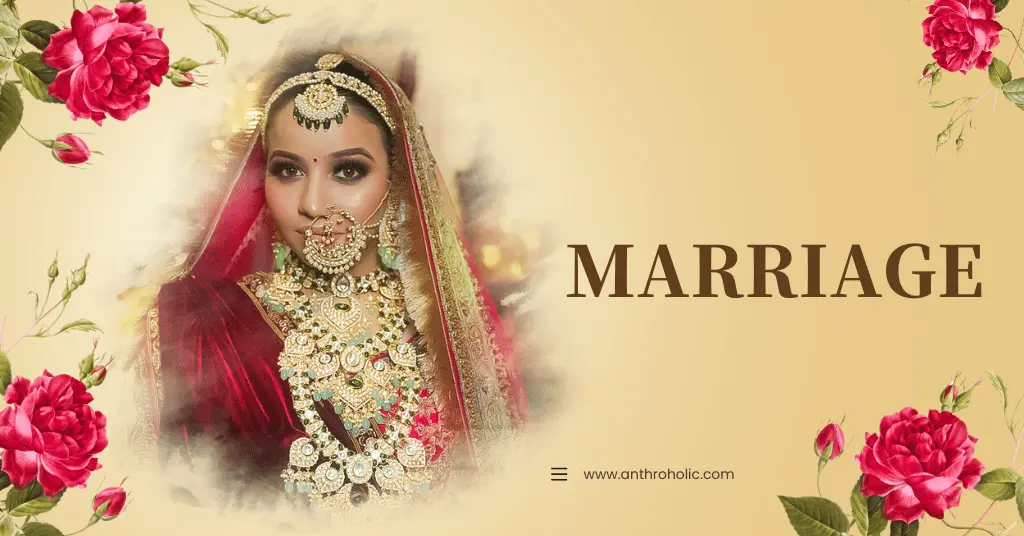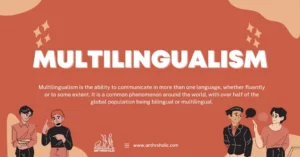AI Answer Evaluation Platform Live Now. Try Free Answer Evaluation Now
Marriage
Marriage, as a concept and practice, is as old as human civilization itself. It has been an ever-evolving institution, with different societies, cultures, and religions attributing their unique meanings and practices to it. This is a discussion about marriage, from its definition, its significance across various cultures, to the different types of marriages. We also delve into the complexities of the role that marriage plays in contemporary society, giving a holistic perspective on this age-old institution.

What is Marriage?
Marriage, at its most fundamental, is a socially or ritually recognized union between individuals, often established through legal contract, religious ceremony, or a combination of both. The purpose of this union can be diverse, including legal, social, emotional, economic, spiritual, and religious responsibilities and rights (Cherlin, 2013). However, the definition and connotations of marriage significantly differ across cultures, societies, and historical periods.
Table 1.1 Definition of Marriage Across Cultures
| Culture | Definition of Marriage |
|---|---|
| Western | A legal and social contract between two individuals, usually involving sexual relations and procreation. |
| African | A union between two families rather than just two individuals, emphasizing communal responsibility. |
| Islamic | A contract between a man and a woman (or multiple women) that establishes rights and responsibilities. |
| Hindu | A sacred, lifelong bond between two individuals, involving duty, righteousness, and moral responsibilities. |
Historical Perspective and Evolution of Marriage
Historically, marriage has served several key functions – consolidation of power, transfer of property, alliance formation, procreation, and maintenance of social order. Over time, these reasons have evolved, with love, companionship, and mutual support becoming more dominant in modern times (Coontz, 2005).
Types of Marriage
There are various types of marriage, largely influenced by cultural, social, and legal contexts. Here are the most recognized types:
Monogamy
Monogamy involves two individuals committed to each other. This is the most common form globally, partly due to legal regulations in many countries (Conley & Rabinowitz, 2019).
Polygamy
Polygamy, less commonly practiced and often stigmatized or illegal in many countries, includes polygyny (one man with multiple wives) and polyandry (one woman with multiple husbands) (Joseph & Joseph, 2020).
Same-Sex Marriage
Same-sex marriage is a marriage between two individuals of the same sex. Recognition of same-sex marriage has been increasing globally, but it remains a contentious issue in many societies (Badgett, 2011).
Table 2.1 Legal Recognition of Marriage Types Globally
| Type of Marriage | Percentage of Countries Recognizing |
|---|---|
| Monogamy | 98% |
| Polygamy | 2% |
| Same-Sex Marriage | 29% |
Marriage and Society
Marriage has substantial implications on societal structure. It shapes family units, influences the distribution of resources, and affects the upbringing of the next generation (Musick & Bumpass, 2012).
Economic Impact
Marriage often leads to economic benefits due to shared resources and combined income. However, marriage also potentially exacerbates wealth inequality, as affluent individuals are more likely to marry (Schwartz, 2010).
Psychological and Health Implications
Marriage generally has a positive impact on mental and physical health. Married individuals often exhibit lower levels of stress, better health habits, and longer life expectancy (Robles et al., 2014).
The Future of Marriage
With societal progression and increasing acceptance of diverse relationship models, marriage as an institution continues to evolve. It remains to be seen how it will further adapt to changes in gender roles, economic structures, and cultural norms.
Conclusion
Marriage is a complex and dynamic institution, reflecting the myriad of cultural, social, and personal facets of human life. It is more than just a personal union – it is a societal cornerstone that profoundly impacts economics, health, and future generations. As we continue to embrace diversity and equality, our understanding and practice of marriage will continue to evolve.
References
- Adams, K. A., & Sader, E. E. (2019). Islamic Marriage: Its Features and Risks. Journal of Islamic Studies, 30(1), 1-23.
- Badgett, M. V. L. (2011). Social Inclusion of Sexual Minorities: Challenges and Opportunities in Latin America and the Caribbean. World Bank Publications.
- Cherlin, A. J. (2013). Public and Private Families: An Introduction. McGraw-Hill.
- Coontz, S. (2005). Marriage, A History: From Obedience to Intimacy, or How Love Conquered Marriage. Viking.
- Conley, T. D., & Rabinowitz, J. L. (2019). A critical evaluation of the evolutionary psychology of human mating. Psychological Inquiry, 30(1), 1-24.
- Hollinshead, K. (2017). Tourism and the Politics of Cultural Synchronization in Community Festivals. Tourism Analysis, 22(2), 173-188.
- Joseph, S. N., & Joseph, A. D. (2020). The Anthropology of Gender in the Middle East. University of California Press.
- Musick, K., & Bumpass, L. (2012). Reexamining the Case for Marriage: Union Formation and Changes in Well-being. Journal of Marriage and Family, 74(1), 1-18.
- Robles, T. F., Slatcher, R. B., Trombello, J. M., & McGinn, M. M. (2014). Marital quality and health: A meta-analytic review. Psychological Bulletin, 140(1), 140.
- Schwartz, C. R. (2010). Earnings Inequality and the Changing Association between Spouses’ Earnings. American Journal of Sociology, 115(5), 1524-1557.
- Sharma, A. (2012). Hinduism as a Missionary Religion. SUNY Press.



